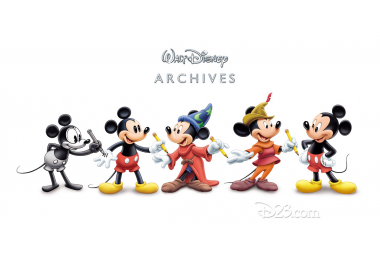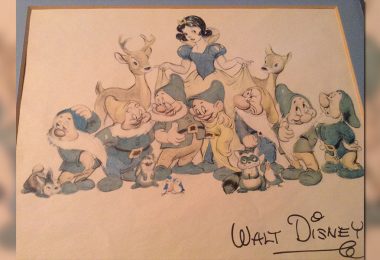
Sydney M, Robbinsville, NJ
A: School work in History and Library Science are both valuable for someone who wishes to be an archivist. I majored in History as an undergraduate, and then did my graduate work in library science. There are many colleges which have library programs leading to a master’s degree.
Katie, Oshkosh, Wisconsin
A: The 1941 strike by Disney animators came before the U.S. entered World War II. Starting on May 29, it only lasted 5 weeks. The output of the Disney Studio continued despite the strike.

Brian Martin, Conroe, Texas
A: The item you have is an infringement of the company’s copyright, produced for sale at flea markets in the 1970s. It was created using illustrations that had been printed in books of the era, and was done without the company’s permission. Some have turned up attached to small fire extinguishers.
Stephen, Saugus, Massachusetts
A: The Disney company does not have an official vision statement, but Disney CEO Robert Iger has stated that his vision for the company focuses on three fundamental pillars: generating the best creative content possible; fostering innovation and utilizing the latest technology; and expanding into new markets around the world.
Kimberly, New York, New York
A: The Walt Disney Archives has a large collection of Kem Weber’s designs. You can contact the Archives at
Disney.Archives@disney.com.
Q : My question concerns the early Disney artist Henry Lyon Porter (1900–1951). Hank Porter was born and raised around here in Albion, New York, one of the Erie Canal towns near my suburban Rochester home. I am attempting to gather biographical information about Hank Porter's career at the early Disney Company which began in 1936 with his Disney hiring and move from Buffalo, New York, to Glendale, California, and concluded in October 1951 at Mr. Porter's untimely passing, sadly, due apparently to degenerative chronic ailments. I am aware that Hank Porter—who had an office in the Disney promotions department—was Mr. Disney’s “go-to guy” for original cartoon character designs (and, in some cases, redesigns.) For example, supposedly, Hank Porter is responsible for the redesign on Dick Lundy and Fred Spencer’s originating design for Donald Duck.
My aim, my goal, is to write a detailed monograph, consisting of several pages of biographical information about Hank Porter’s particular workdays at the Disney Company (1936–1951). During World War II, Hank Porter and his Disney colleague Big Roy Williams (who would be a on-screen cast member of The Mickey Mouse Club in the 1950s) created original character designs for the U.S. Military Insignias. One Hank Porter mascot/ insignia supposedly caught the approving eye of General Claire Chennault for his “Flying Tigers” squadron of military transport planes which flew the Pacific and into Southeast Asia. General Chennault gave special commendations to Hank Porter and Roy Williams for their “Flying Tigers” insignia design.
Mark, Rochester, New York
A: We cannot add much to what you already know about Porter. After he was hired at Disney in 1936 as a publicity artist, he penciled and inked several of the Disney Sunday comic pages for newspapers (from 1937–40). With the coming of World War II, he designed insignias for over 1,000 military units.
Eury, Groton, CT
A: Disney designed over 1,200 insignias for various military units (including submarines) during World War II. One book which pictures many of them is Donald Dons Dogtags (1992); perhaps you will be able to find a copy. There have not been any books that have published illustrations of all of the Disney-designed insignias.
Michael, Beverly Hills, California
A: We appreciate your offer, but Disney does not acquire artifacts of Anaheim history. Have you tried the Anaheim Museum?
Jose, Kissimmee, Florida
A: Those names are incorrect; there are no official names associated with those characters.





